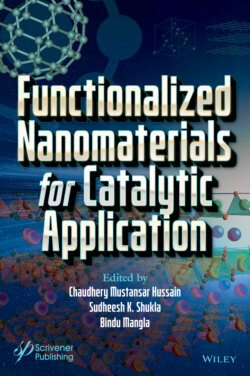Читать книгу Functionalized Nanomaterials for Catalytic Application - Группа авторов - Страница 23
1.5.1.4 Graphene-Carbon Nitride/Metal or Metalloid Oxide–Based FNMs
ОглавлениеRecently, conjugation of C and N in a metal-free graphitic polymer is a hotspot that captivates the research workers to utilize the visible energy for the receptive photocatalytic zone in redemption of water pollutants [149]. Normally, hetero-junctions of g-C3N4–based PC are obtained by fusing g-C3N4 (semiconductor) PC and a co-catalyst (semiconductor). Significantly, type II hetero-junction and Z-scheme PC are predominantly employed by many co-workers for removing OPs. Z-scheme have been extensively utilized in BiOI/Pt/g-C3N4 [150], MoO3/g-C3N4 [151], g-C3N4/FeWO4 [152], g-C3N4/Ag/MoS2 [153], TiO2/g-C3N4 [154], and g-C3N4/Ag/Ag3VO4 [155]. While, straddling, staggered, and broken heterojunctions belonging to type 1, type 2, or type 3, with a small/large bandgap between CB and VB/or CB and VB with high potentials, are used in ZnO/g-C3N4 [156], Bi/Bi2WO6/g-C3N4 | Bi/Bi2MoO6/g-C3N4 [157], SmVO4/g-C3N4 [158], g-C3N4/CuWO4 [159], and BiVO4/g-C3N4 [160]. Thus, many FNMs have been used in fabrication, to name a few for the removal of organic toxics like MB, MO, Rh B, fuchsin, and X3B form water segments.
Li, H. et al., fabricated WO3/Cu/g-C3N4 nanohybrids to degrade 4-nonylphenol [161]. While, Yang, Y. et al. used Ag@AgBr/g-C3N4 FNMs as nano-composites to degrade MO [162]. Similarly, the authors Fu, J., et al., in their recent publication of CdS/g-C3N4, demonstrated a comparable output in enhancement-factor as 20.5 and 3.1 for dye-degradation of MO while using the composites of two active semiconductors g-C3N4 and CdS individually [163]. Later, in another experiment, the authors Yang, Y. et al. investigated SPR results of Ag NMs while studying the performance of Ag-coated-g-C3N4 over MO dye-degradation [164]. In another situation, researchers Ma, D. et al. revealed that g-C3N4/RGO/Bi2WO6 FNMs that fit the Z-scheme had RGO as a bridge to transfer the e− electrons between the two bands g-C3N4 and Bi2WO6. The photoelectrons formed in the CB of the later Bi2WO6 moves rapidly into the VB of the former g-C3N4 (holes) to accumulate sufficient (e−) electrons in the CB of the former and holes of VB in the later. FNMs were found effective to photocatalytically degrade and remove TCP from water [165].
In a separate work, Jiang, Z. et al. engineered TiO2/g-C3N4 by solvothermal method and proved its photocatalytic degrading properties over Rh B, MB, and CIP. H+ and superoxide ·O2− had significant role over ·OH radical in this reaction. Excitonic PL signals indicated that n-π* electronic shifts were involved by lone pairs e− present in N atoms of g-C3N4. Hetero yolk-shell structure formed significantly promoted the charge transference efficacy [166]. In a new protocol, facile magnetic g-C3N4/Fe3O4/p-Ru NP FNMs photo-nano catalyst got by deposition-precipitation process showed excellent degradation capacity and reusability with only 5% efficacy lost detected after five cycles. Photocatalysts degraded organic matters—aromatic amines and coloring pigments—azo dyes (CR, CB, EB, and RR-120) efficiently from industrial aqueous water. Formation of photo-electron creates h+ (holes), where the reactive ·OH formed induces a responsible oxidative photo-degradation and h+ (holes)/·O2− radicals have insignificant roles [167].
